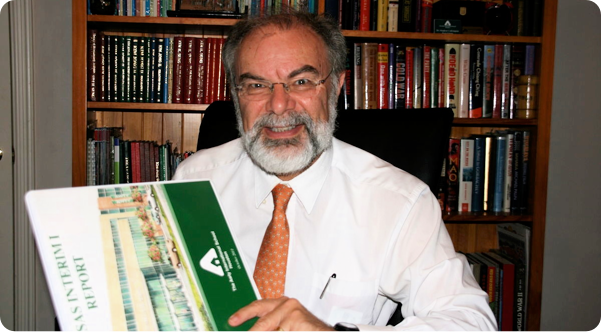Houston Blog
My blog from Houston, Texas. Updated most weeks, usually on Sundays.






I have heard it said that there is a fundamental difference between students in the US (where I am working now) and in China (where I worked for seven years). In the US, an underachieving student will usually blame the teacher. In China, underachieving students will usually blame themselves. An underachieving student in China is likely to increase effort and work harder, whereas evidence suggests an underachieving American is more likely to give up and reduce effort. An American student is said to be motivated by a combination of personal ambition and peer pressure, whereas the prime motivation for a Chinese student is said to be respect for their parents and a desire to fulfill their expectations and aspirations. When parents are asked what they want for their children, Chinese parents invariably say they want their children to be successful. American parents, on the other hand, are far more likely to answer by saying they want their children to be happy.
After working in international schools in both the US and China, I can say that there is enough truth in these generalizations that they cannot be dismissed. HOWEVER, I think being in an international school environment is perhaps the best and most powerful way for students to counter the excesses of these generalizations. This is because the experience of interacting with fellow students from a wide range of cultural backgrounds means that students inevitably learn from one another and take on a more balanced range of work habits that they would not otherwise have encountered. Peer pressure can be a powerful force to achieve positive outcomes in the right kind of creative, diverse, tolerant, international environment.
Setting aside the uniquely positive environment of international schools for a moment, though, I wonder whether the general differences between Chinese and US students might at least in part explain why Shanghai tops the world in international comparative tests of reading, mathematics and science, while the US comes in at ranking 26 (http://www.care2.com/causes/shanghai-scores-at-the-top-u-s-scores-at-number-26.html). Twenty-sixth place is well behind schools in Hong Kong, Singapore, and South Korea, although to be fair, it is also ahead of many other countries in the list of 65 countries in the study (many of which are less economically developed parts of the world).
In his book “Bounce”, the sportswriter and columnist for the London Times, Matthew Syed, examines at the relationship between effort and excellence. His well-argued and well researched thesis is that raw talent alone is a very poor basis for achieving excellence, and that a keen desire to keep practicing is the key factor in achieving success in any domain. Although natural talent is helpful, the far more significant factor is whether that talent leads a person to practice voraciously or sit on one's laurels.
For example, Syed reports on a 1991 study by Anders Ericsson, a psychologist at Florida State University. Ericsson studied three groups of violinists who had been assessed according to the quality of their performances. One group comprised those who had been assessed as being outstanding, another was classified as ‘good’, and the last group was of only average ability. Ericsson’s finding was that by the age of 20, the outstanding group had put in 10,000 hours of practice, the good group 8,000 hours of practice, and the average group 4,000 hours.
In a similar vein, Nick Bollettieri, who runs the famous tennis academy on Florida’s west coast that has produced Agassi, Courier, Hingis, Kournikova, and Sharapova, amongst many others, requires his athletes to have an “appetite for practice and hard work”. Bollettieri says: “They may arrive thinking they can cruise their way to success, but they quickly learn that nobody got anywhere in life without working hard, by showing tremendous discipline and by taking responsibility for their actions” (Syed, p.126).
Syed also recounts an audacious human experiment when a Hungarian named Laszlo Polgar advertised for a wife and married her in 1967. He declared that any parent could produce a world champion, and proceeded to test this theory when Klara provided him with three daughters; Susan, Sophia and Judit. Laszlo’s daughters became some of the greatest female chess players of all time. Polgar stated: “Children have extraordinary potential, and it is up to society to unlock it ... the problem is that some people for some reason do not want to believe it” (Syed, p.60).
I should make it clear here that, like many issues in life, this can be taken to excess, which is where the reputation of some Chinese parents as ‘tiger mothers’ arises. As in most areas, a lack of balance creates its own separate set of problems.
I was reflecting on the relationship between effort and excellence this week as I was putting the finishing touches to a report to one of our two accrediting authorities. One of the urgent tasks I faced upon arriving at Awty at the beginning of August was to prepare a progress report for ISAS (the Independent Schools Association of the Southwest - http://www.isasw.org/). Together with our other accrediting authority, CIS (the Council of International Schools – http://www.cois.org), ISAS had conducted an accreditation visit at Awty in October 2008. The report on that visit was received in January 2009, and we passed with flying colors. The report contained a vast array of commendations – plus a much smaller series of important recommendations.
My duty over the past two months has been to prepare – at great speed but fortunately with the help of my excellent senior staff – an update report to ISAS detailing the progress we have made in implementing these recommendations. It is perhaps a good example of one of the many very important, yet almost invisible, tasks that a Head of School must perform.
The focus of that report was building excellence at Awty. I came to the conclusion that the secret to outstanding performance for a school as a whole is probably no different from the secrets of achieving individual excellence:(1) high expectations, (2) parental support, and (3) purposeful practice.
In that context, I think Syed’s thesis has great significance for individuals, but it is also very significant for institutions. When I visited Sydney (Australia) a few years ago, I was struck (metaphorically speaking!) by a huge roadside billboard for Nike shoes which said: “In order to be number 1, you must act as though you are number 2”. For our school, I might express it slightly differently – we should never let being very good prevent us from making whatever effort is necessary to be excellent.
Working with my senior staff to prepare the ISAS report has been an extremely pleasant and informative task, as I was able to report that most of the ISAS recommendations have been implemented very effectively. This is especially so in the very important areas of board reform and facilities development. In a few cases, implementation of the ISAS recommendations had not yet been fully completed. As a result, we have recently initiated several projects to address these recommendations. These have included an initiative to map our entire curriculum from PK-12 (as a step towards improving skills progression and content coherence through the School), and examining the extent of textbook use and varied learning styles in the Primary School. We are also refocussing the implementation of our vision statement, especially as it relates to the four areas of (1) enriching international perspectives, (2) strengthening academic excellence, (3) working to form the all-round talents of our students, and (4) enhancing our sense of partnership with parents and the wider (even global) community.
Whether we are thinking about individuals or institutions, achieving excellence is important. It is a serious process that involves constant effort and authentic self-reflection. I am very confident that Awty is on a great pathway towards achieving even greater heights of excellence than those we currently enjoy.
We have exciting times ahead, and I can hardly wait!
Excellence - both personal and institutional
Sunday, 2 October 2011
My second blog in less than 24 hours. I must have too much to say :-)
A major achievement this week was the completion and submission of the School’s Interim Report for our accrediting agency, ISAS. The Report is documentary evidence of Awty’s unwavering commitment to achieving true educational excellence.




